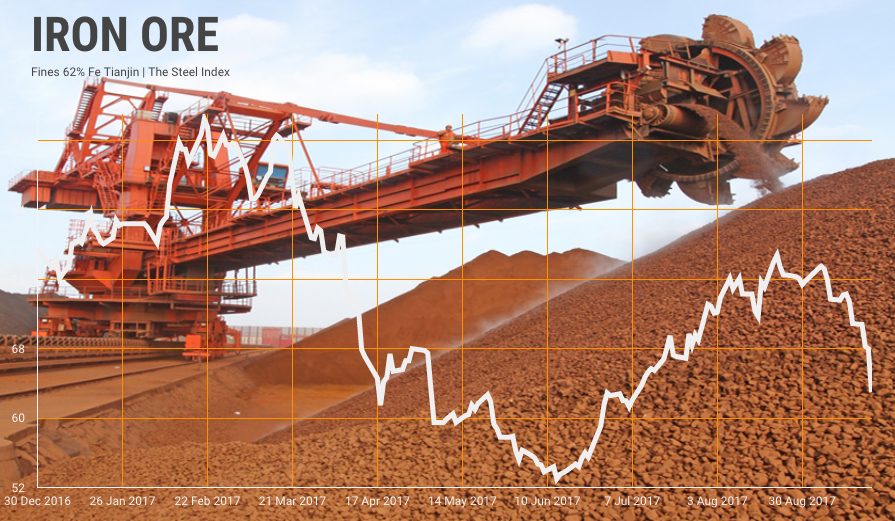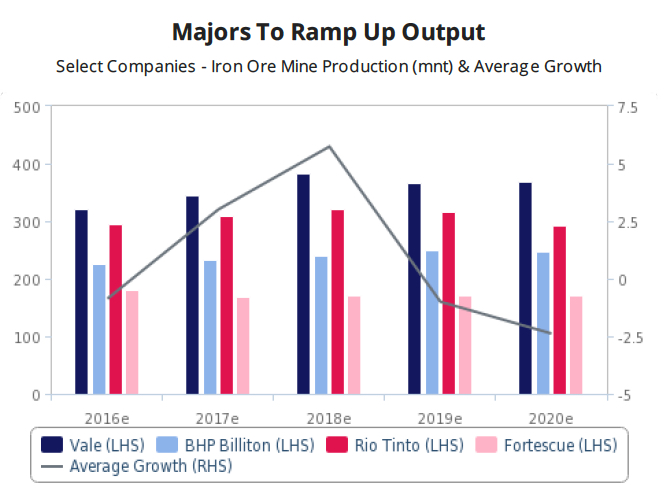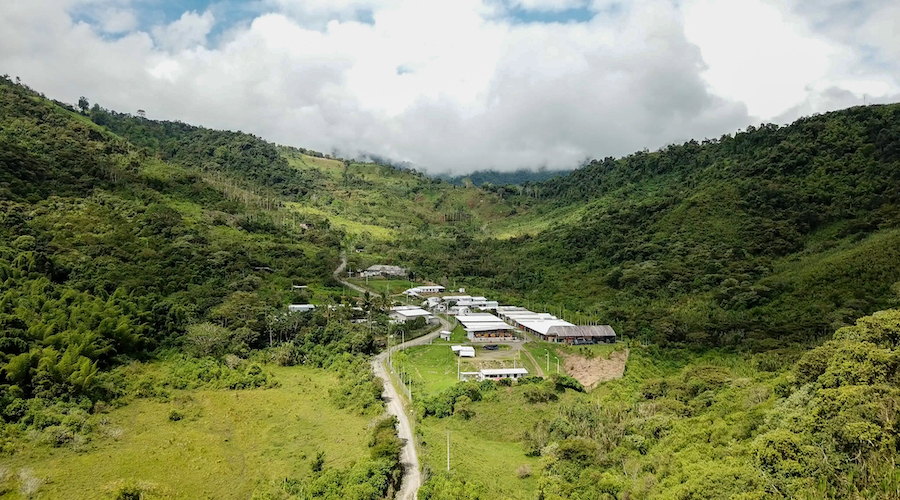Iron ore price craters
 The decline in the price of iron ore over the past two weeks turned into a rout on Thursday as worries about new supply combined with fears that Chinese steel production may have peaked.
The decline in the price of iron ore over the past two weeks turned into a rout on Thursday as worries about new supply combined with fears that Chinese steel production may have peaked.
The Steel Index benchmark price for Northern China 62% Fe ore sank by 7.4% to trade at $63.00 a tonne on Thursday, an 11-week low. Year-to-date iron ore has lost 20.8% of its value. Lower grades came in for greater punishment ith 58% Fe fines delivered to the port of Qinqdao falling 13.7% to $44.10 according to TSI.
Chinese imports constitute around 70% of the seaborne trade and while 2017 shipments are in line with record imports of over 1 billion tonnes last year, supply continues to grow particularly from major producers in Australia and Brazil.
A new report from BMI Research forecasts modest growth in global output over the next five years as a drop in domestic Chinese production and a slowdown in Australia offset strong growth in Brazil and India.

Source: BMI, Bloomberg
Global number one, Vale, will drive production growth in the South American nation with the low-cost S11D and Itabiritos projects. S11D’s nameplate capacity is a whopping 90m tonnes per year. The Rio de Janeiro-based firm remains on track to produce 360–380m tonnes in 2017 and over 400m tonnes next year, accounting for over 80% of Brazil’s total output. The country exports 90% of total production.
Australian iron ore production – all of which is destined for export markets – will slow through 2021 with the exit of junior high-cost miners as major players ramp up production. Australia is expected to increase exports by 34m tonnes to 885 million tonnes in the fiscal year ending June 2018, according to government forecasts.
According to BMI, declining production costs will keep top miners’ strategy of increasing output to reap economies of scale economically sustainable.
Rio Tinto and BHP Billiton now respectively boast cash costs of $14.30 and $15.00 per tonne of iron ore after intensive cost-cutting efforts. Vale projects cash costs as low as $7.70/tonne at S11D, due to integrated logistics and high-quality ore.
Peak Chinese steel
China produces as much steel as the rest of the world combined. Data released by China’s steel industry association yesterday showed mills produced record tonnage for a second month straight in August.
But the rapid growth is mainly in anticipation to mandated output cuts – as much as 50% in top steel producer province Hebei – during winter months in an effort to alleviate pollution problems in large cities.
That could lead to a steep drop-off in iron ore demand, particularly given that stockpiles at the country’s ports remain not far off record highs above 130m tonnes, compared to 80m tonnes this time last year. Steel inventories in China have also been growing and now sit at 4.34m tonnes.
More News
{{ commodity.name }}
{{ post.title }}
{{ post.date }}




Comments